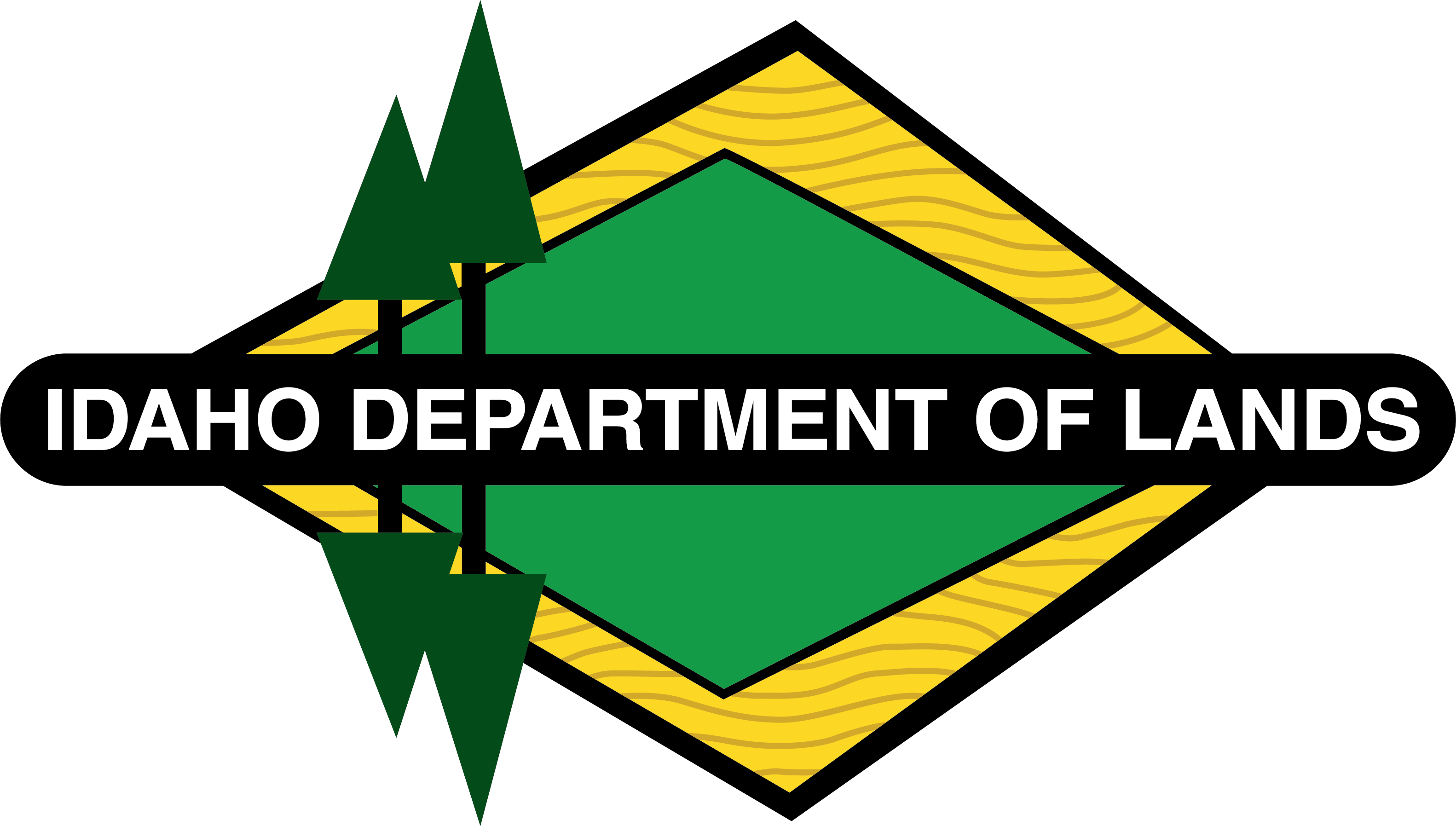Category: Urban and Community Forestry Library
Celebrating the Contributions of Stephen Drinkard

The IDL Community Forestry program recently lost one of its long time contributors and community forestry assistant. Stephen Drinkard passed away in October. Drinkard served as the North Idaho community forestry assistant for many years. In this role, Mr Drinkard assisted Idaho’s northern communities with tree ordinance development, tree management planning, and technical assistance with any tree-related projects.
Stephen was a true renaissance man from his time playing baseball in city leagues in Southern California to earning his MA in English literature from UCLA and MA in adult education from the University of Idaho. Stephen served as Sandpoint’s grant administrator from 1999 to 2012 and secured $13 of grant funding for every dollar they paid him through his years of service.
The IDL Community Forestry program owes a great debt to Mr. Drinkard for his many years of service to the program and his constant assistance to Northern Idaho cities like Sandpoint. A full dedication for Stephen can be found in the Sandpoint Reader here.
Winter Tree Care, Protection and Identification
By Gerry Bates
IDL Southern Idaho Community Forestry Assistant
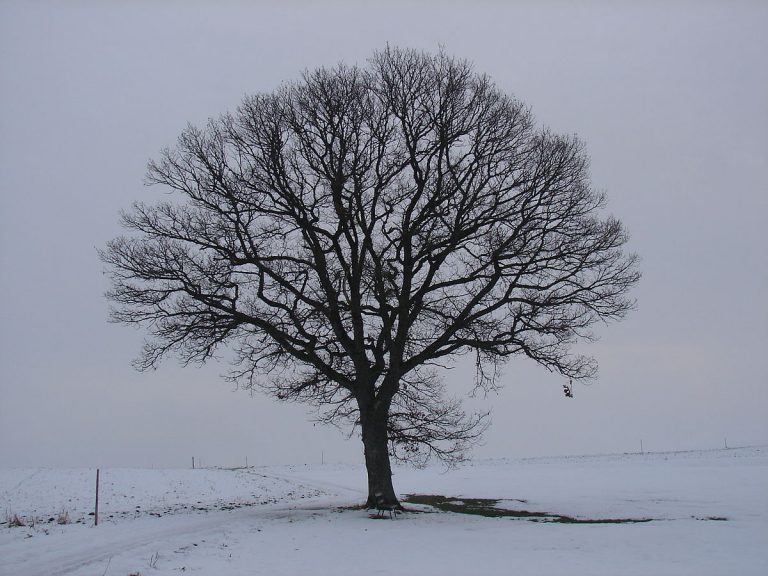
Short days and long, cold nights are sure signs that the trees you care for are dormant. Winter’s bare branches offer an opportunity to inspect your trees and evaluate whether they present a hazard or require maintenance. When a tree branch lands on people or property, it can mean trouble.
In evaluating the hazard potential of a tree, identify potential targets and defects. Targets are objects or property that would be hit if the tree or limb falls. Common targets are houses, cars, and utility lines. It is especially critical to consider areas where people gather, such as pools, picnic tables, and decks.
A defect is the condition that may cause the tree to fall or lose branches. If a defect is suspected, a hazard tree evaluation should be undertaken by a trained professional Arborist or urban forestry consultant.
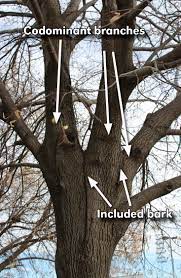
If a defect is suspected, a hazard tree evaluation should be undertaken by a trained professional Arborist or urban forestry consultant. Every tree has the potential to fail, but while only a few do each year, it’s important for property owners to regularly check their trees for defects. Trees most likely to become hazards are those weakened by age, storms, fires, or other injuries. If such trees are planted near pedestrian or vehicular traffic or buildings, they can jeopardize safety.
Look in the crown of the tree for signs of low vigor, dead branches, wounds, or cracks. Fungus, mushrooms, or conks on or at the base of the trunk or large limbs indicate decay inside the tree. If a tree begins to suddenly lean, or if the ground around the tree starts to rise up, there is a strong likelihood that the tree is going to fall.
If the hazard is not imminent, consider moving the target. Although you can’t move buildings, sometimes a landscape feature, parking site, playground equipment, or picnic table can be moved out of the danger zone. Remove defective branches and reduce the weight of large branches. Sometimes the best solution for very hazardous trees is removal.
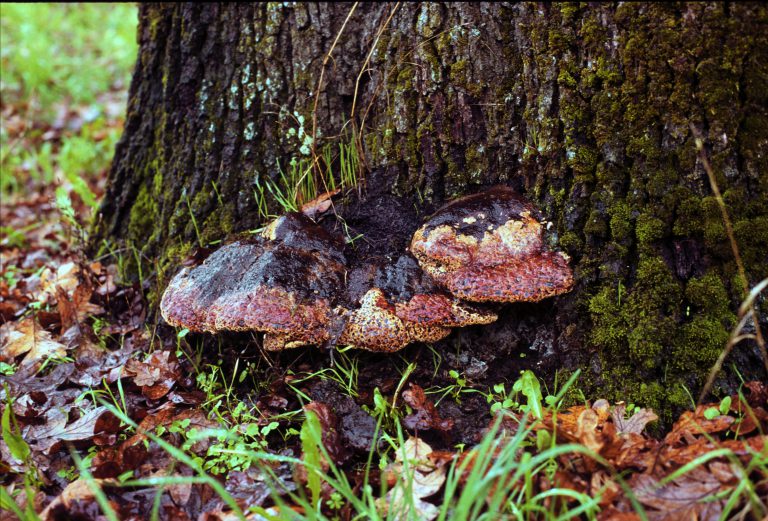
Dormant trees are still susceptible to injury or death. The most obvious danger is injury resulting from low temperatures. Trees that aren’t hardy enough to grow in the area are likely to suffer such injury. But the sudden onset of extremely cold temperatures after relatively warm weather in the winter can cause injury to otherwise hardy trees.
To avoid this kind of injury, select cultivars of trees and shrubs that are hardy in your city. Avoid stimulating new growth that won’t have time to harden off before winter. That means don’t fertilize trees after June 30, and avoid late summer pruning. Irrigate your trees until the ground freezes. Trees and shrubs withstand severe temperatures better if soil moisture is adequate. Mulch root zones with a thick layer of wood chips, sawdust, leaves, or straw to retain moisture in and moderate the temperature of the soil.
Sunscald, or southwest damage, is a problem of thin-barked trees such as maple, ash, crabapple, Mountain ash, and fruit trees–especially if they are newly transplanted. Winter sunscald occurs when the bark on the south and west sides warms during the day and then freezes at night. Sunscald can be prevented by reflecting the heat of the sun. Trunks can be painted with white latex paint or wrapped with burlap or commercial white wrapping. Use the wrap for at least the first two winters on new trees, but be sure to remove it each spring, as it provides an excellent place for insects to live.
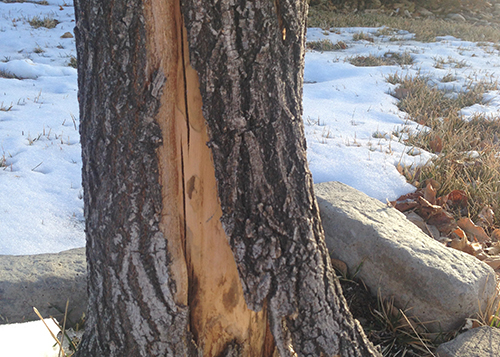
Snow breakage can be a problem, especially in evergreen trees and shrubs. When snow is allowed to accumulate on spreading or upright branches, the increased weight can easily break whole sections out of a tree. Remove snow from branches before it accumulates. While winter can be tough on our trees, especially newly planted ones, a little forethought and care can assure long term success.
During snowy winters, animals cause quite a bit of damage. Deer, porcupine, rabbits, and mice can girdle trees by gnawing on the bark. Wire can be used around the trunk to protect it from larger animals; tinfoil helps deter smaller animals from chewing on the bark.
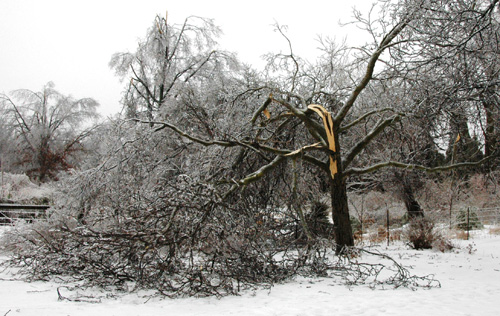
The identification of trees in the non-leaf seasons is fun and easy. A twig is a young shoot representing the current season’s growth of a woody plant. To successfully identify plants by their twigs, familiarize yourself with the individual parts of a stem. The terms lateral or terminal bud, leaf scar, stipules, node, spur shoot, and pith need to be understood. Individual species of trees all have different and specific arrangements of these parts. That particular arrangement is the key to identifying the plant.
Fortunately, help is just a “mouse click” away. Many sites on the internet can lead you step by step through the process of correctly identifying a plant. A search using the words “Dendrology Key” will yield sites devoted to plant identification. One method of plant identification, dichotomy, asks pairs of questions. The answer leads to two more choices and so on, until by the process of elimination, the plant is correctly identified.
Bark is another feature that helps in winter tree identification. While it may not be possible to distinguish between individual types of maples, it is possible to determine if the tree is an oak, a birch, or a chestnut–just by its bark. Normally, it’s best to examine mature trees when attempting to identify a tree by its bark. Young trees have not yet formed the corky material characteristic in most barks. Some bark is paper thin (birch); other trees have thicker bark (oak). It can be deeply furrowed (sweet gum), lined with thorns (Honeylocust), scaled (Scotch Pine), or peeling (Juniper). An excellent reference for identification of trees by their bark is “Tree Bark” by Hugues Vaucher.
Meridian Urban Wood Reclamation Project
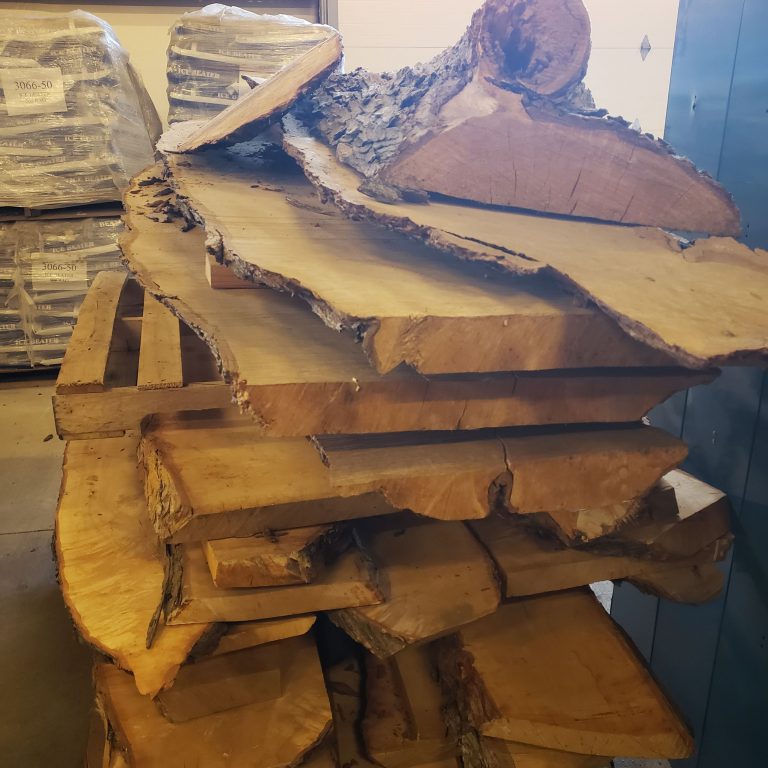
Like many tree programs, Meridian’s Community Forestry program deals with a lot of “waste” wood. Much of the wood removed from the declining mature trees in our urban forests can be used numerous craftsman projects.
Meridian’s City Arborist, Matt Perkins, reclaimed the lumber from a silver maple the city removed in 2017. The maple was planted in Meridian’s Centennial Park in 1936. The tree provided shade and improved air quality for Meridian citizens for over 80 years.
The maple was removed due to an overall decline in health. Matt and his team made picnic tables for the city’s fire stations instead of sending the tree’s lumber to the landfill.
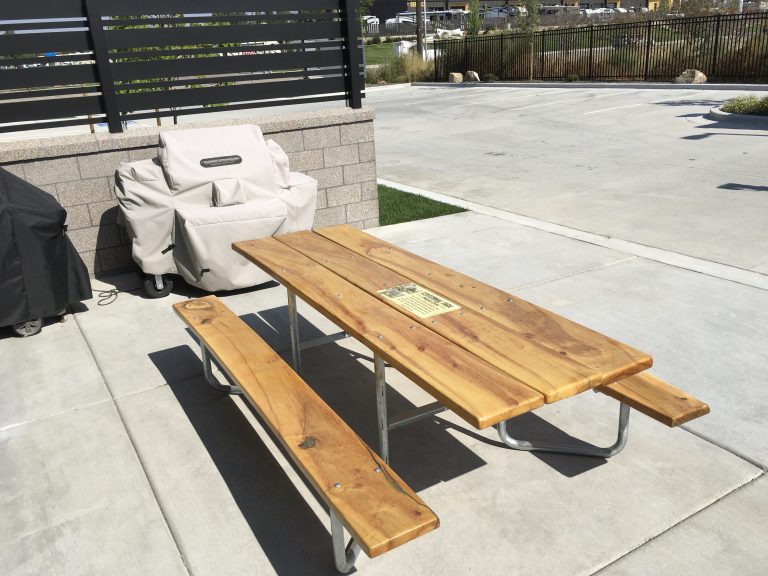
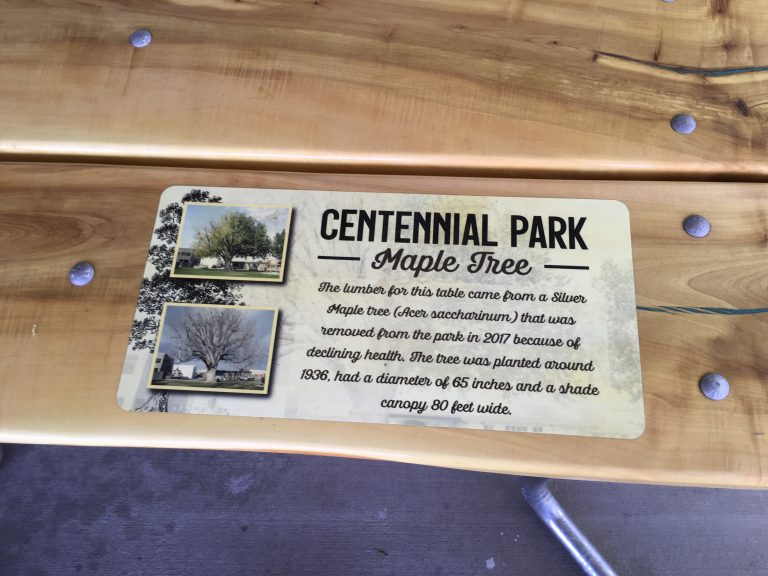
Forest Health Update: Bark Beetles May Attack Trees After Winter Storms
By Erika Eidson
IDL Forest Health Specialist
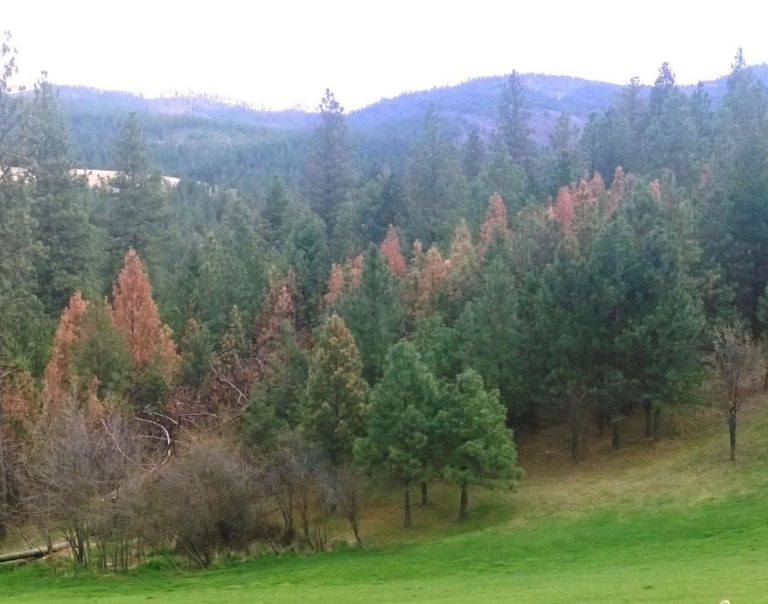
Damaging winter storms across northern Idaho this season mean forested areas are more susceptible to infestations of certain bark beetles this spring.
Idaho Department of Lands (IDL) forest health officials want forest landowners to know that trees uprooted or broken in the storm can become infested by bark beetles as the weather warms up this spring.
The beetles can build up populations in fresh, damaged logs and then attack and kill neighboring healthy trees. However, taking certain steps can minimize the damage.
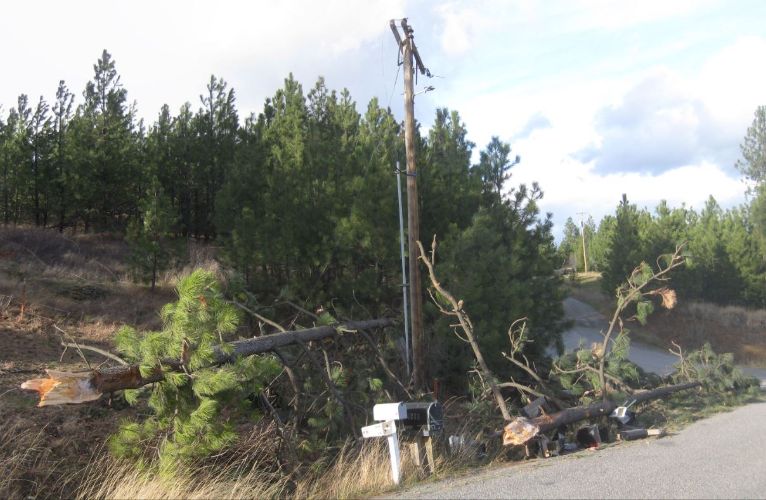
The risk of bark beetle attack and the recommended management actions differ depending on which tree species have been damaged. The size of damaged trees also impacts their susceptibility to bark beetle attack. Dead trees do not pose a bark beetle threat, only green trees and logs damaged within the past winter are cause for concern.
Pines: and pine slash larger than three inches in diameter can be infested by the pine engraver beetle (Ips beetles). Pine engraver beetles infest wind-thrown trees and slash in April and May, laying eggs that develop into adults and emerge in June of the same year. Beetles that emerge in June often attack adjacent live pines.
Douglas-fir: particularly large-diameter logs, can be infested by Douglas-fir beetle. Beetles infesting damaged Douglas-fir in the spring will produce offspring that take a year to develop, emerging to attack additional Douglas-fir trees in the spring of 2022. Down, large-diameter western larch are also susceptible to attack by Douglas-fir beetle, but live, standing larch are rarely attacked.
Engelmann spruce: can be infested by spruce beetle, especially if logs are large-diameter. Spruce beetles take one or more years to develop, depending on temperature, before emerging to attack additional standing spruce trees. Spruce beetles can attack ornamental species like Norway or blue spruce, but these are infrequent hosts.
These bark beetle species are highly attracted to the moist tissue under the bark of wind-thrown trees, broken tops, and logs.
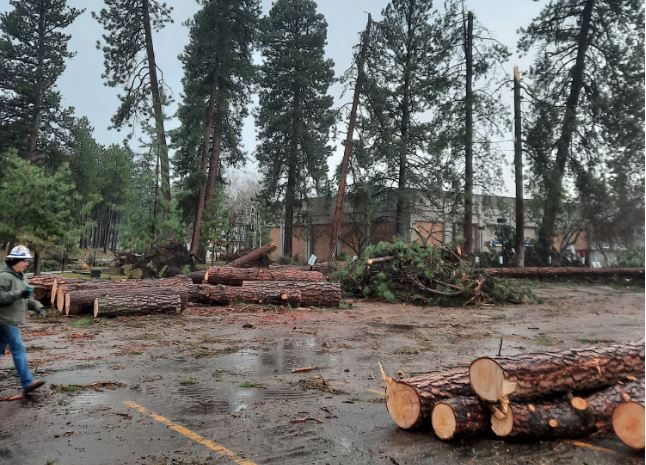
The best option to reduce beetle infestations is to remove damaged trees. If there are not enough trees to economically salvage, consider safely burning or chipping, or removing branches and cutting green logs into smaller pieces.
If chipping in spring, do not pile chips near the base of standing trees since their odors can be attractive to bark beetles for a short period of time. Spread chips out in the sun, or chip in late summer or fall if possible. Down, large-diameter western larch are also susceptible to attack by Douglas-fir beetle, but live, standing larch are rarely attacked.
Forest owners can hasten the drying of logs and green wood by spreading them in a sunny area before beetles fly in the spring. Leaving damaged trees or decks of green logs in shady areas increases the chances that they will be infested. DO NOT stack green firewood next to live standing trees. The idea is to reduce the number of places for the damaging beetles to breed and then kill live trees.
In pines, quick action is necessary since beetles can emerge from damaged pine materials as early as June, 2021. Large-diameter logs of Douglas-fir, western larch, and spruce will not pose a threat until spring, 2022.
These logs can be bucked and split this spring or summer and left to dry out and kill any developing beetles before they emerge next spring. Infested materials can also be removed, chipped, or burned during the winter of 2021-2022.
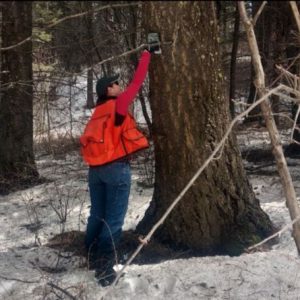
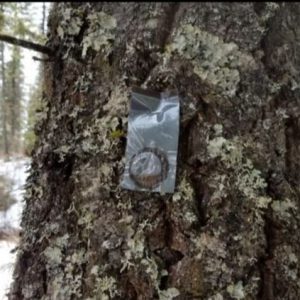
Pheromone repellent pouches called MCH are an additional tool to ward off Douglas-fir beetle. These pouches can be stapled to susceptible down logs in April, 2021, and will prevent infestation by Douglas-fir beetle by tricking beetles into thinking the logs have already been fully attacked.
If down logs cannot be treated this April and become infested, surrounding stands can be protected with MCH applied to nearby standing trees in April, 2022. MCH is very effective at protecting Douglas-fir trees, but it will not work to protect pines and has limited effectiveness in protecting spruce. For additional information about using pheromones, please contact the IDL forest health team at (208) 769-1525.
More information on Idaho forest health is available here. IDL Private Forestry Specialists also are available in offices across the region to assist forest landowners. Information about landowner assistance is available here.
Before the Wind Blows
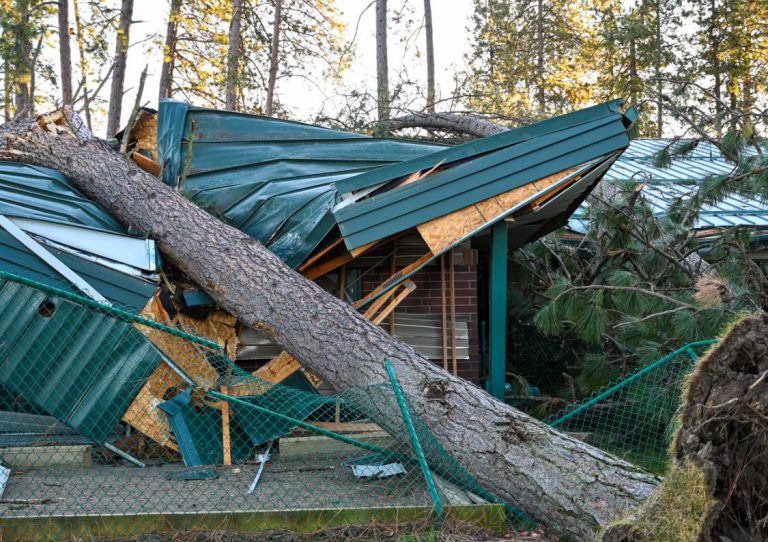
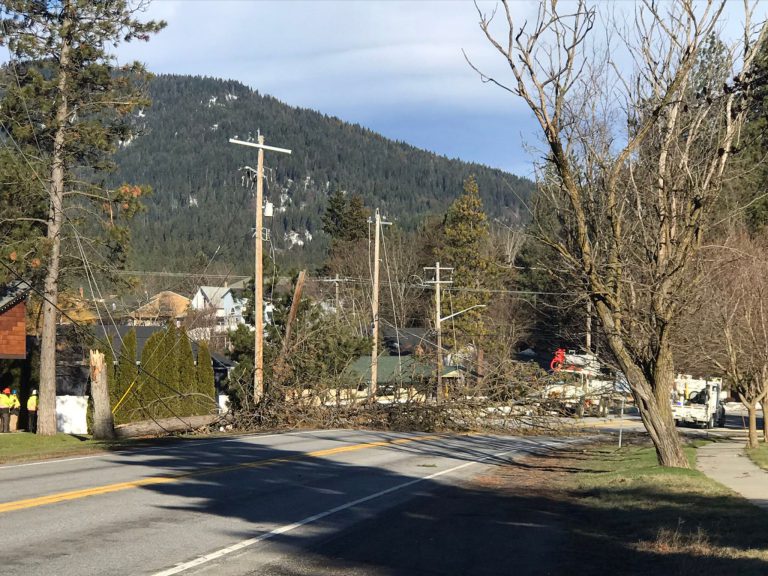
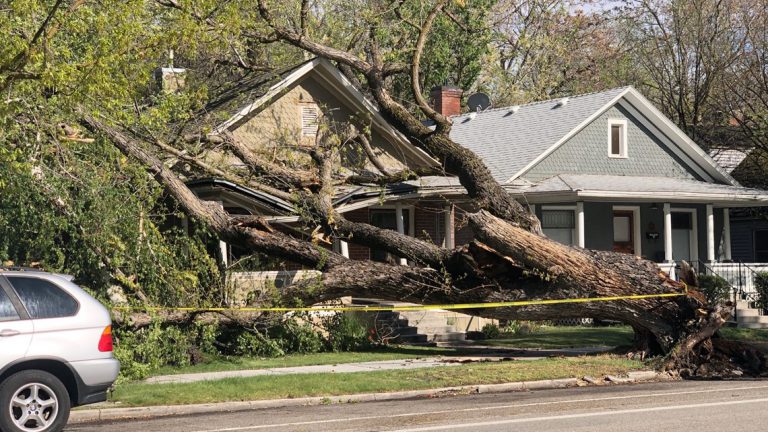
Cleaning up after a weather event can mean dealing with large amounts of wood and brush. A plan can assist in making sure the wood goes to the best use and helps to offset the cost of cleanup.
If you live in a region that has a strong timber industry, establishing relationships with mills before a natural disaster can help you get your logs into the mill after a disaster. Knowing the log buyer at the mill and their procedures for accepting urban wood will help get urban wood utilized on a regular basis not just after a disaster.
Post Falls’ wood utilization plan includes chipping brush to be used in mulch rings, getting native conifer logs to a local mill, and working with Cannon Hill Industries, a local wood recycler, to deal with root balls and trunk wood that is not going to make a log.
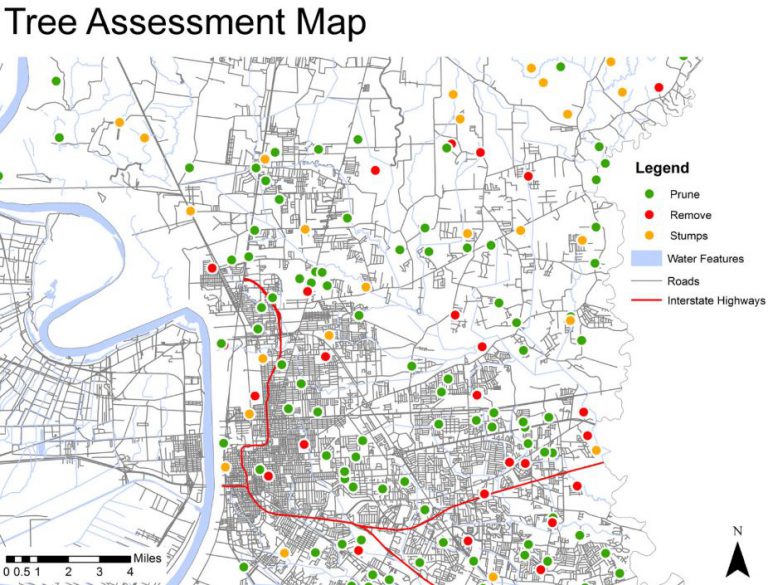
Many communities need to deal with trees that cannot be brought to a traditional mill. The Urban Wood Network is an organization that is dedicated to building national awareness of the urban wood market by bringing together urban wood efforts, providing leadership, and sharing information. Visit their website at: https://urbanwoodnetwork.org/.
You can view webinars and see how other municipalities and campuses have set up wood utilization programs. Nick Goodwin is the Urban Forester for the City of Coeur d’Alene; Nick will be purchasing a Wood Mizer mill to be used in his program to repurpose urban wood into lumber that can be used in park projects.
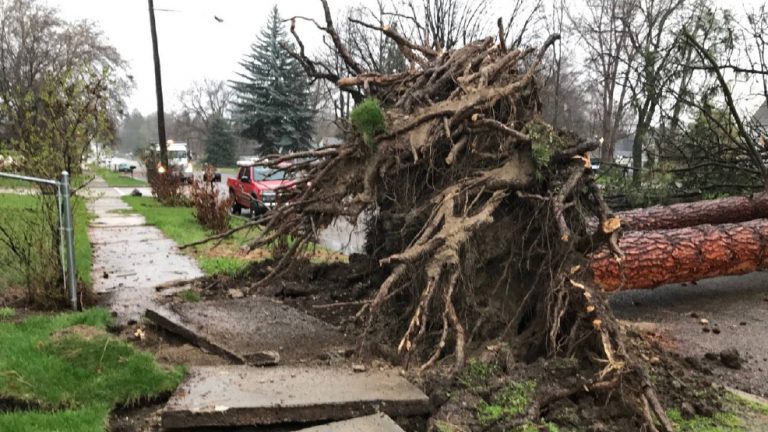
Lorem ipsum dolor sit amet, consectetur adipiscing elit. Ut elit tellus, luctus nec ullamcorper mattis, pulvinar dapibus leo.
Plan the Work, Work the Plan
By Gerry Bates
Southern Idaho Community Forestry Assistant
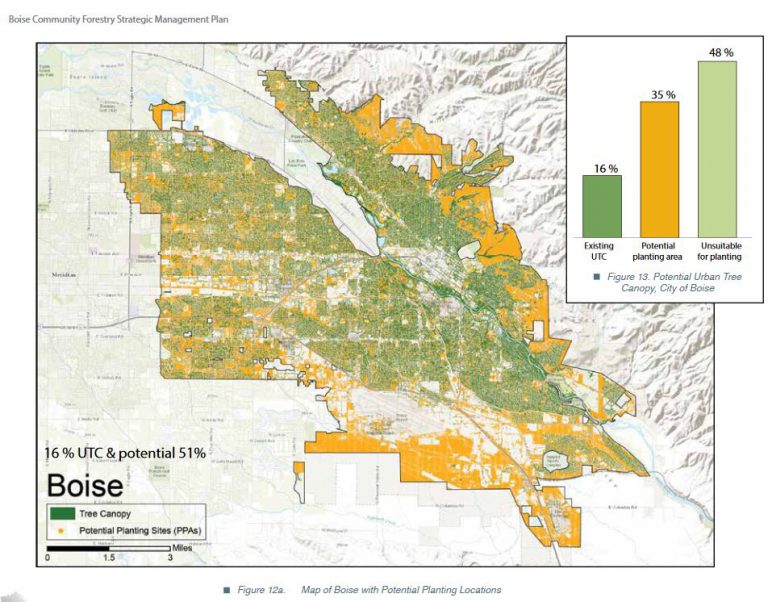
Successful management of the community forest is based on an effective management plan. We all know the benefits of trees to our community. Trees purify our water and remove pollutants from our air. They are essential for soil conservation in windy areas and can also aid in energy conservation in both summer and winter.
Trees also provide beauty for our landscapes and a place to cool a sun-warmed brow. They are necessary for shelter and food for wildlife. These things are just a few of the benefits that can be accomplished through community forest management.
Effective community forestry programs are based on well-defined goals and objectives. Usually, the first step is to establish a legally constituted board, commission, or committee to act as an advisory group to city government.
Primary functions of tree boards include:
1): Recommendations to the city government on ways to regulate the planting, care, and removal of publicly owned trees.
2): An assessment of the community forest situation, using some type of inventory analysis to determine short-and-long-range program goals and objectives.
3): Preparation of a comprehensive Community Forestry Management Plan.
4): Preparation of an annual plan of work and an annual report to the governing body.
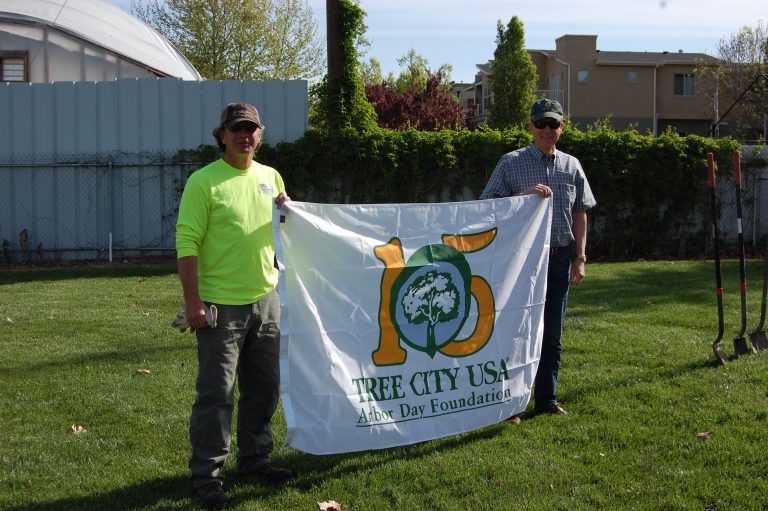
The next step is to develop a tree ordinance. The purpose of most ordinances is to protect and maintain existing trees while providing for new ones. Ordinances usually designate who is responsible for administering the program, how the program operates, enacts enforcement procedures, and sets guidelines of tree planting and maintenance.
An ordinance must balance the needs of the trees with what can actually be enforced. Typically, ordinances provide for tree removals, tree preservation, tree planting, utility company activities, tree replacement, tree landscaping requirements in new developments, standards governing arborists, enforcement procedures, etc.
Any tree ordinance should be designed to meet a particular community’s needs; consequently, no two ordinances will be exactly the same.
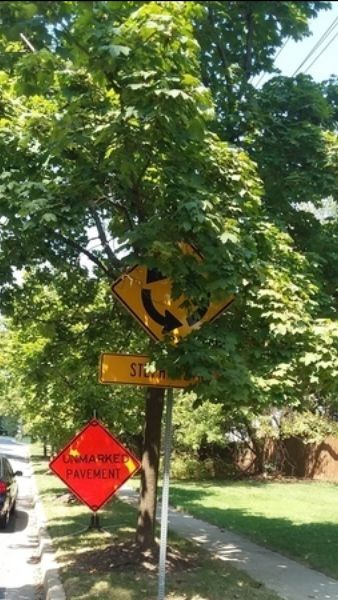
A management plan is critical for developing, sustaining, and maintaining the community forest. Before a community can begin a community forestry program, it must first take a look at the entire community and identify needs.
Basically, there are three fundamental questions that need to be answered before a tree committee can develop a workable community forestry work plan.
1) “What do we have?
The answer to this question provides baseline information and data that can be used for future planning and also to measure the success of the plan. The best way to do this is to this is to complete a tree inventory.
Basic information collected in tree inventories includes species, stem diameter, location, condition, and maintenance needs.
2) “What do we want?”
Based on information obtained in the tree inventory, a community can set goals. Defining goals through a planning process helps identify priorities. It is also important to remember that both short term and long term goals should be identified and prioritized.
3) “How do we get what we want?”
Identify the actions, procedures, and implementation steps necessary to achieve the goals set forth.
Many times, the City Forester or person responsible for the care and management of the community forest will prepare an initial draft a management plan, usually with input from the Tree Committee.
The plan should include definitions on terms used in the plan, a Storm Response Plan in the event of catastrophic weather events, an Invasive Pest Control Plan that will address measures to control European Ash Borer or other damaging pests and diseases, requirements for developers for new street tree planting including an approved Street Tree List, and proposed programs such as a Heritage Tree Program, an Adopt a Tree Plan or a Memorial Tree Plan.
Then, the plan will be presented to the city administration for review and comment. Changes will likely be requested and the plan will change according to the needs of the city, the available and/or projected future budget, and what is considered achievable and reasonable. Once the final draft is completed, it is presented to the City Council for approval.
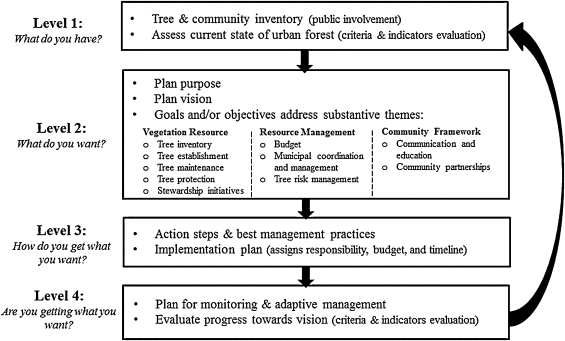
Finally, the management plan should be evaluated on a regular basis. Evaluation can be a committee’s best friend. Evaluation is necessary because, if properly conducted, it indicates both the elements of the program that have been successful and those requiring change. Through this process, a committee will likely identify specific program areas that are not achieving desirable results. A thorough evaluation of these areas will be necessary to identify solutions.
Do You Know Where Your Roots Are?
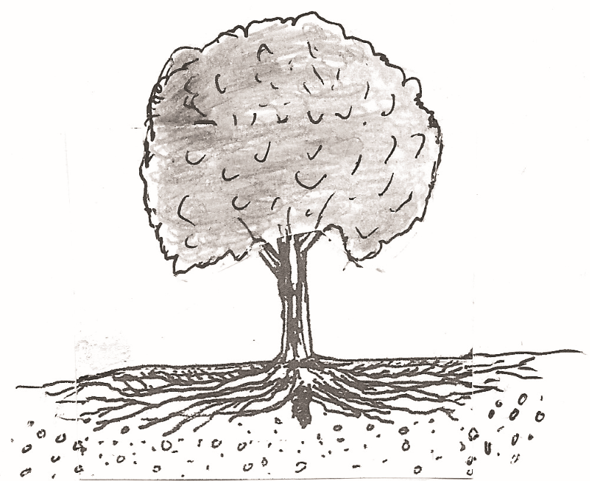
The myth still exists that a tree’s roots are a mirror image of its crown. This is not only far from the truth, it is also dangerous to tree health. In reality, the life-giving roots are usually:
- Spreading to a distance of 1- to 2-times the height of the tree
- Growing within about 2 feet of the surface
So, give ‘em room! Remember where they are at when you dig a trench, pave, or change the soil grade. Also, when planting street trees, use a search engine to find out how Silva Cells or C-U Structural Soil can give tree roots a place to safely grow.
Demand Diversity
By Gerry Bates
South Idaho Community Forestry Assistant
As I travel around the southern end of our great state, I get the chance to work with a lot of good people who are trying to establish long lasting legacies called trees within their cities. These legacies not only provide shade and beauty, but myriad other benefits that make them essential elements of the infrastructure in our cities. And, unlike most infrastructure that offers the most benefit directly after installation, tree benefits increase over time. They don’t (or should not!) be engineered to have a 30-year life span and then require replacement.
However, there’s a problem. All too often, we accept that the local nursery, or the regional plant wholesaler, has only a limited pallet of plant material to offer. A visit to the local tree farm allows us to see Colorado spruce planted from fencepost to fencepost, or quaking aspen and green ash offered as the best and most viable options for our planting projects. Folks, please don’t put all your eggs in one basket and continue planting a monoculture of trees that, when the right insect or disease comes along, devastates a significant percentage of the trees in your town.
We won’t get change in the marketplace unless we demand it. Start small, be consistent and request trees that aren’t overused in your city. Serbian spruce or concolor fir are great replacements for Colorado spruce. Black Hills spruce also deserves more attention. Instead of ponderosa or Austrian pine, use something else. Anything is better than aspen. If we ask for plant material that isn’t as common, eventually our plant providers are going to work to fill the need. Besides being fantastic tree huggers, they are business people; they will work to make their customers happy. If not, expand your sources for plant material. The Idaho Nursery and Landscape Association has a list of vendors on their website that offer a wide variety of trees and shrubs.
Finally, there are new cultivars becoming available all the time. There are new varieties of elm that are disease resistant and will still provide the benefits that the old American elm did years ago. There are a bunch of oaks that are underutilized. In southeastern Idaho, where I live, we didn’t used to plant many oaks. That is changing fast. When planning a project, plan for longevity and diversity. Rely on your Community Forestry Assistants for help and advice. Most importantly, plant the right tree in the right place. That’s an often overused euphemism, but from what I see, it is still often overlooked.
Be a Bee City!
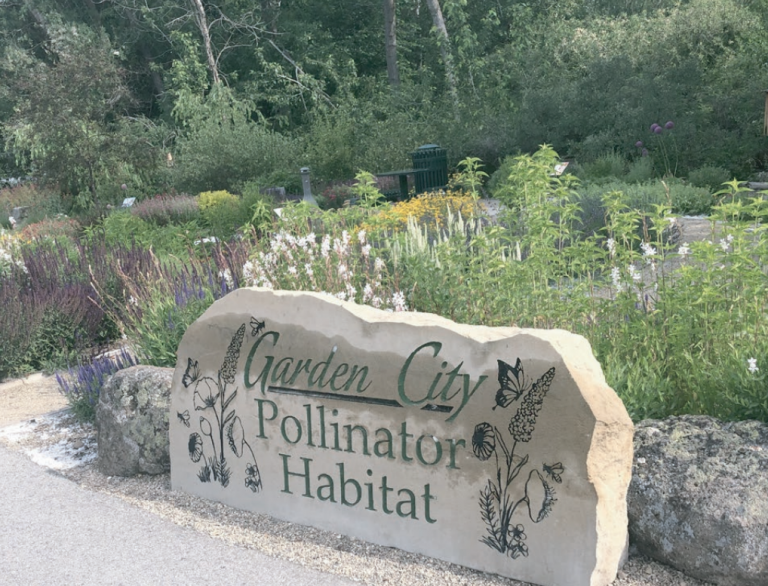
According to Peter Kageyama, author of the topselling book, For the Love of Cities, people know that on a deeper level, flowers, trees, parks, gardens, and greenspaces represent necessary elements to making places actually livable. A city without trees and gardens is not a city that anyone would want to live in.
These green elements are part of the essential INFRASTRUCTURE of our places. Yet unlike the obvious infrastructure such as roads, bridges and power grids, these green elements evoke a deeper physiological and emotional response. Think of the calm we feel in a park or the sense of wellness from a walk along a trail. This is called “biophilia” – the innate tendency of human beings to seek out and connect with nature and it is hardwired into us.
There are many ways to make Idaho’s cities more livable places. In Garden City, a dedicated cadre of volunteers had an idea for the project but with no backing. Judy Snow and her husband are members of the Chinden Gardener’s Club and just started talking to people about the possibility of developing a demonstration garden and becoming members of a larger organization and promoting healthy living through beautiful gardens. The club found grants and support from charitable organizations, won the support of Mayor Evans and the city council, and brought their idea to fruition. The idea was born to become a Bee City USA.
One in every three bites of food we eat is courtesy of insect pollination. Equally important, 90% of all wild plants and trees rely on pollinators for the survival of their species. Not surprisingly, in 2007 when honey bee colonies started disappearing, beekeepers and non-beekeepers alike became very concerned. While less is known about native wild bees and other pollinators, we do know that entire species are disappearing at alarming rates due to the same enemies as honey bees – loss of habitat essential for food and shelter, diseases and parasites, and inappropriate pesticide use.
There are requirements to be a Bee City USA, just as there are in the Tree City USA program that is supported by the Idaho Community Forestry Program. Both programs have an end goal of making communities better places in which to live, work and recreate. And, neither program would be successful without the spirit of volunteerism that seems prevalent in Idaho cities.
Look Out for Invasive Pests
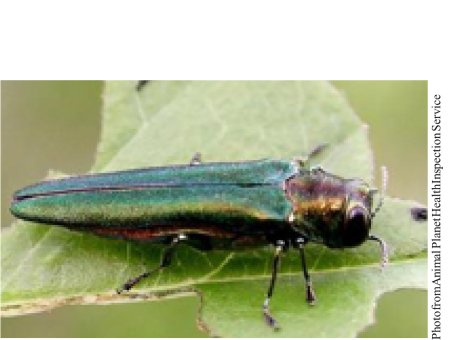
Tree damaging insects such as the emerald ash borer, gypsy moth, Japanese beetle, and Asian longhorned beetle are threatening urban forests in Idaho. City workers and arborists play an important role on the front lines of the battle to keep invasive pest species out of our state. Being able to identify the pests and their patterns of damage associated with them will enable arborists to notify the Animal Plant Health Inspection Service (APHIS) if an outbreak occurs in their area.
At the APHIS website you can do your research by looking at picture galleries of the pests in all their life stages and the damage they do. Information about the biology of the pests, regulations, controls and restoration after the damage, is also available on the website.
Insects aren’t the only organisms that are likely to damage to our urban forests. Diseases such as European larch canker and thousand cankers disease are potential threats. The APHIS website has information on these diseases that you can use for identification.
To report a pest or disease in Idaho you can contact the State Plant Health Director. Prompt notification of the presence of invasive insects and diseases can help stop or contain outbreaks and limit damage to Idaho’s urban and community forests.

